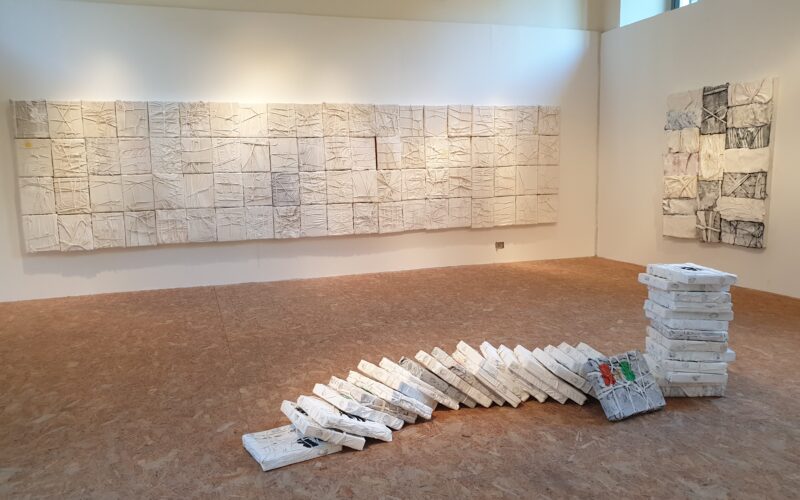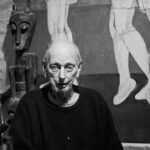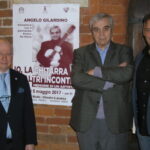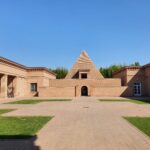There was an almost tense air of anticipation as I moved through the rooms of the Teatrino di Corte at the Royal Palace of Monza. Here, ensconced within walls steeped in history as ancient as it is alive, the world of Mario Arlati awaited me. The Milanese artist, active since the late ’70s, had a unique talent for communicating with his audience through a language that melds the visceral strength of material with the sublimation of color.
Mario Arlati is not a painter of mere flat surfaces or two-dimensional images. His works advance toward the viewer, creating craters, wounds, and tears; they are manifestations of a fervent and ongoing struggle with the medium. At times, it seemed that Arlati wanted us to lose our sense of space, forcing us to engage with the three-dimensionality of his pieces. Arlati establishes a rhythm, a new tempo to observe, feel, and immerse ourselves in his world.
This spatialism perhaps represents a need to move beyond conventional boundaries. For him, the medium is an active partner, ready to be excavated, etched, and sculpted. There is a sort of symbiosis between the artist and the medium, wherein Arlati imposes his vision without compromising the genuineness of the material.
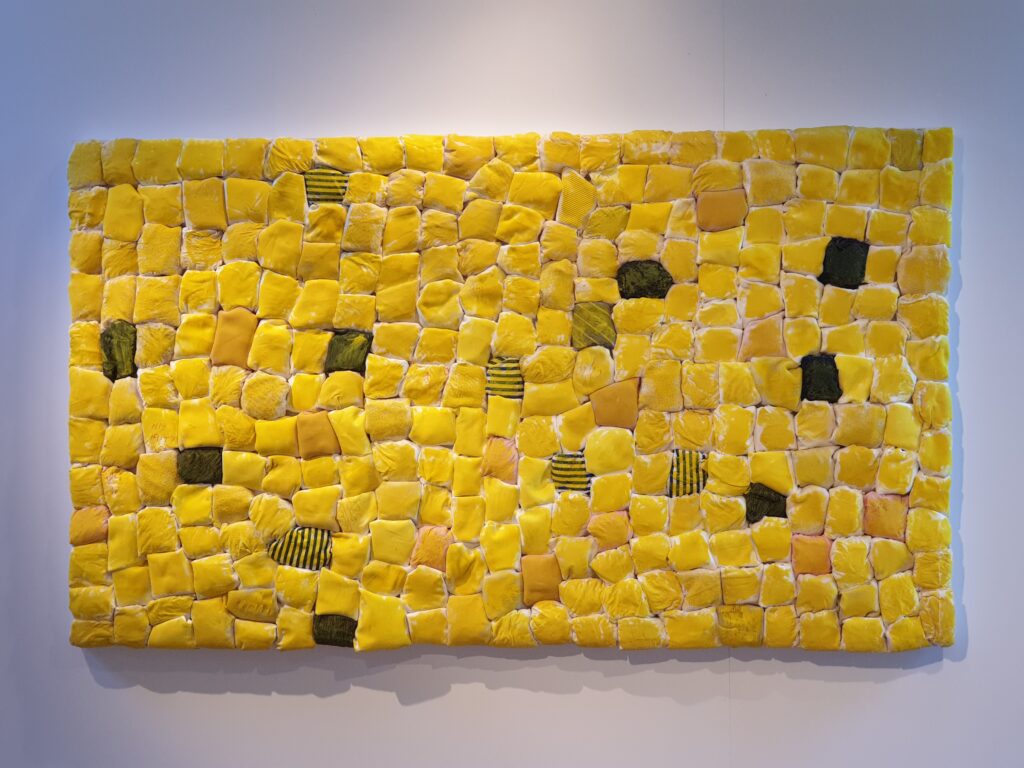
And then there’s his poetic use of color. The radiant tones of the Mediterranean permeate much of his art. It’s as if Arlati draws from the chromatic energy of the sea, sky, and earth to imbue his works with that same vital force. The pursuit of chromatic purity seems almost like a vocation for him. I could perceive it in the complexity of his blues, the warmth of his reds, the intensity of his greens.
Walking through the exhibition in the Council Chamber thus became a journey of inner growth. Each piece represented a stage, a reflection, a challenge for both the eyes and the soul.
As I moved among the works, the curiosity to better know the man behind the canvas became insatiable. Mario Arlati, as I discovered, is a traveler not just in physical space but also in the inner realm of the soul. Born in the heart of the twentieth century, his artistic journey began in the late ’70s. Since then, his language has undergone an evolution, a constant dialogue between the essential and the complex, between the abstract and the material.
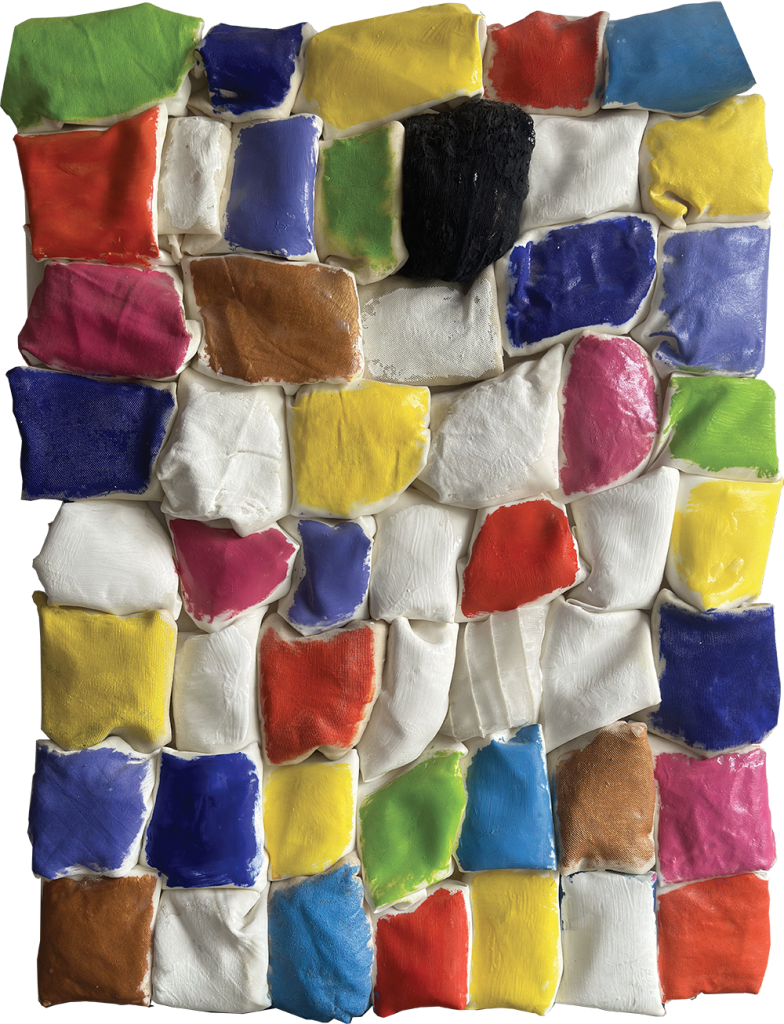
Arlati is an alchemist of the medium. In his hands, the canvas becomes a fertile ground for excavation, etching, and sculpture, transforming it into three-dimensional surfaces that defy linear interpretation. His is a continuous exploration of a medium that refuses to remain passive, as if wanting to free the spirits trapped within the fabric.
His art is the product of an avant-garde drive that has led him to create textured, living surfaces. And in his layered works, a visceral love for the Mediterranean emerges. That expanse of water has been more than a muse; it has been a stage for his artistic gesture. Color for him is more than a shade; it is a soul. It seems that his canvases wish to absorb the light and the deep blue of the sea to immortalize them.
Emerging from this context is a stringent need: to invite the observer to lose themselves, to enter into a dialogue with the piece until they become a part of it.
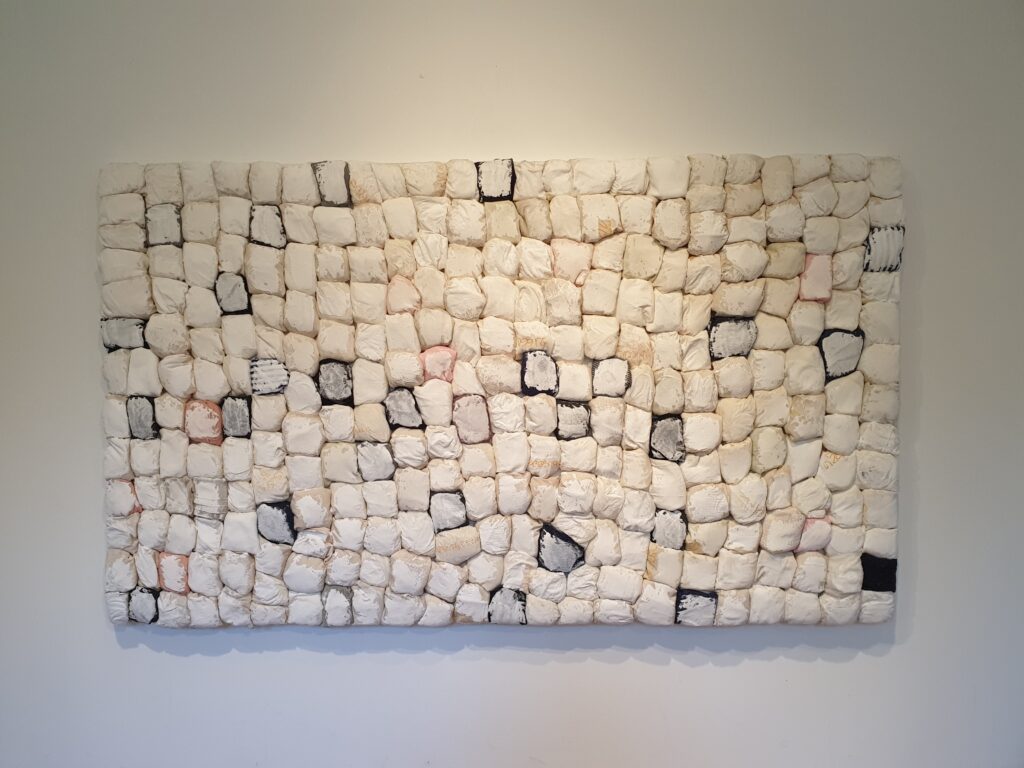
And so, as I exited the Council Chamber of the Royal Palace of Monza, I felt that I had gotten to know not just the artist, but also the man, the alchemist, the traveler. I had grasped his impulse to confront the medium, to play with light, and to interact with time. To understand that true art is precisely this: an uninterrupted dialogue, not only between the artist and his medium but between the piece and the one who observes it; a dialogue that continues even when the exhibition hall lights are extinguished.

